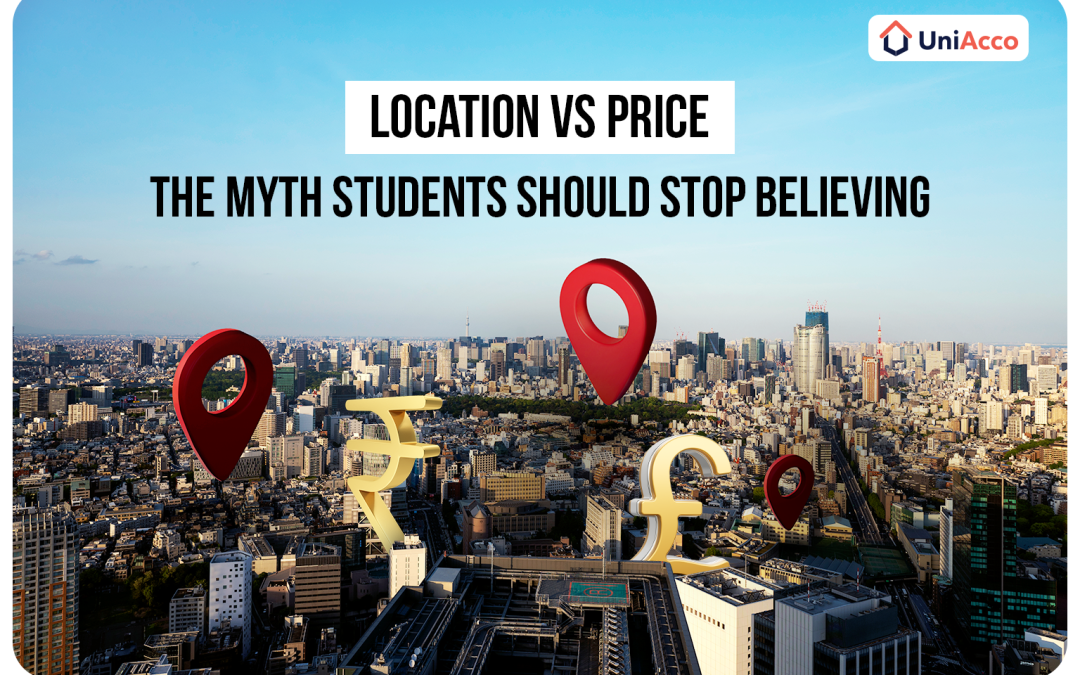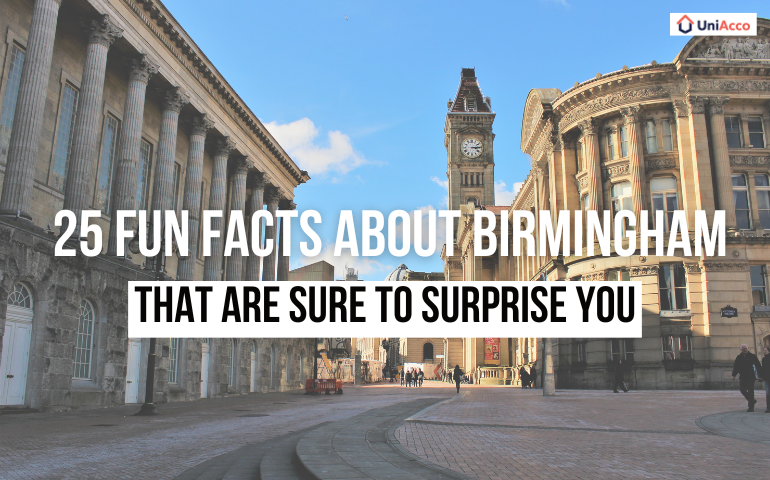Table of Contents
You’ve made it to London and are getting accustomed to a new country and a new culture. But no one taught you how to use the London Underground at orientation. You know that you’ll need it for everything: classes, groceries, and meeting friends. And if you’re new to the city, even finding the right platform can feel like a small crisis.
This guide is for international students who are figuring it all out. You’ll learn how to get around quickly, avoid beginner mistakes, and stop feeling like a tourist every time you tap your card.
About the London Underground
The London Underground, often called the Tube, is the city’s lifeline. If you’re planning to study in London, learning how to use the London Underground is one of the first things you’ll need to figure out.
It began operating in 1863, making it the oldest underground railway system in the world. The name “Tube” comes from the round shape of its tunnels. It stuck around after the Central Line was once nicknamed the “Twopenny Tube” in the early 1900s.
Today, the Underground has 11 lines, each marked by a distinct colour. It connects 272 stations, and while most are within Greater London, 14 extend beyond the city. The system is divided into nine zones, with Zone 1 covering Central London, where most universities, museums, and major stations are located.
Trains usually run from 5 AM to midnight. On Fridays and Saturdays, selected lines also offer Night Tube services, which are useful if you’re returning from a late class, shift, or evening out.
As a student, you’ll probably travel across Zones 1 to 3 most often. You don’t need to know every line from day one. But once you understand how the zones and lines work together, your daily travel becomes much simpler.
Exploring the London Underground Zones
| Zone | What It Covers | Who It’s For |
| Zone 1 | Central London – major landmarks, business hubs, universities | Most students will use this zone daily |
| Zone 2 | Just outside the centre – residential areas, some universities | Useful if you live slightly outside the city centre |
| Zone 3 | Suburban neighbourhoods – more affordable housing options | Ideal for students on a budget |
| Zones 4–5 | Outer suburbs and some commuter towns | Good for long-distance commutes or weekend trips |
| Zones 6–9 | Farther out – edges of London and nearby counties | Mostly used for airport access or occasional travel |
Quick Tip: The Elizabeth line connects Heathrow Airport to Central London through major stations like Paddington and Liverpool Street, which is handy for arrivals and travel days.
Also Read: Your Ultimate Guide To London Travel Zones 1 to 9
How to Use The London Underground?
Learn Your Route Before You Travel
- Always plan your journey before you leave. Use TfL’s journey planner or trusted apps like Google Maps and Citymapper.
- Make note of your starting station, the line(s) you’ll take, and whether you’ll need to change trains. Some routes may involve switching lines at major interchange stations like King’s Cross or Oxford Circus.
- Save your regular routes if you’re commuting to university or student accommodation daily. That way, you’re not starting from scratch each time.
Choose the Right Payment Method
You have three options: Oyster Card, contactless bank card, or a Travelcard. Each has its own use case, depending on your budget and how often you travel.
| Card Type | Oyster Card | Contactless Bank Card | Travelcard |
| Best for | Students and long-term visitors | Short stays or tourists | Regular commuters with fixed travel zones |
| How it works | Rechargeable prepaid card you tap in and out of stations | Uses your bank card or phone to tap directly at gates | Prepaid pass for unlimited travel within selected zones |
| Zones covered | Pay-as-you-go across all Tube zones | Pay-as-you-go across all Tube zones | Unlimited travel within chosen zones (e.g., Zones 1–2) |
| Cost benefits | Cheaper than paper tickets, daily and weekly price caps | Same fares and caps as Oyster, no need to top-up | Fixed price for unlimited journeys during validity period |
| Purchase options | Top up online, at stations, or via TfL app | No purchase needed; use existing bank card | Buy for a day, week, month, or longer |
| When to use | Ideal if you travel frequently or stay longer in London | Best for occasional trips and tourists | Great if you have a fixed routine with multiple trips daily |
Also Read: Oyster Card: A Londoner’s Travel Essential
Be Aware of Peak Hours
- The Tube gets very crowded during rush hours, typically 7:30–9:30 AM and 5:00–7:00 PM.
- Trains run more frequently during these times, but the crowds can be overwhelming if you’re not used to it.
- If possible, travel slightly before or after these hours, especially if you’re carrying luggage or heading to an unfamiliar destination.
Know the Timings
- Most lines run from around 5:00 AM to midnight, Monday to Saturday.
- On Sundays, services start later and run less frequently.
- Some lines, such as the Central and Victoria, offer Night Tube services on weekends. Always check timings before late-night travel.
Download the Right Apps
- Citymapper is one of the most trusted apps for London travel. It shows real-time train arrivals, station closures, and the fastest routes.
- Tube Map is useful offline and includes a night mode. It’s ideal for planning routes without an internet connection.
- TfL Go is the official app from Transport for London. It gives you live updates, step-free access info, and fare estimates.
Use the Station Like a Local
- Always stand on the right of escalators. The left side is for walking.
- Let passengers exit before you enter the train. This is the expected norm.
- Don’t block doorways. Move inside the carriage, even if you’re getting off in a couple of stops.
- Avoid playing loud music or calls on speaker. It’s considered inconsiderate.
- Mind the yellow line on the platform. Stand behind it while waiting for your train.
Keep Your Belongings Secure
- The Tube is generally safe, but it’s still a public space.
- Keep your bag zipped up and close to you.
- Avoid leaving phones, laptops, or wallets unattended.
- During busy hours, wear backpacks on your front to avoid bumping others or being pickpocketed.
Don’t Hesitate to Ask for Help
- Station staff are trained to help, and they’re used to international students asking questions.
- If you’re lost or unsure where to go, approach the help desk or information point.
- Announcements at the station and on trains will keep you updated about delays, changes, and final stops.
Travel Etiquette for the Tube
- Eating is allowed, but try to avoid smelly food as no one enjoys the scent of reheated curry on a cramped carriage.
- Keep your volume down if listening to music.
- Offer your seat to anyone who looks like they need it more. TfL has priority seating for a reason.
Save Money with Student Discounts
- If you’re a full-time student aged 18+, you can apply for an 18+ Student Oyster photocard.
- It gives you 30% off adult-rate Travelcards and Bus & Tram Passes.
- Register online through the official TfL site after enrolling at your university.
Also Read: 10 Best Places For Students To Live In London
Wrapping Up!
Figuring out how to use the London Underground is your first step to feeling at home in London. It might seem tricky now, but every journey gets easier. Once you know the ropes, the Tube stops being intimidating and becomes a tool for exploring, studying, and living London on your terms.
While you master your routes, UniAcco is here to simplify your search for safe, affordable student accommodation in London and ensure your comfort from day one.
FAQs
- Do I need an Oyster card to travel on the London Underground?
Not necessarily. You can use contactless payment methods such as debit/credit cards, mobile phones, or smartwatches. Paper tickets and travel cards are also accepted, offering multiple ways to pay as you learn how to use the London Underground.
- What is the cost of travelling on the London Underground?
A single trip using an Oyster or contactless card costs around £2.80. If you buy a paper ticket with cash, expect to pay up to £6.70. For budget-friendly travel, contactless or Oyster is the way to go.
- Is the London Underground hard for newcomers to use?
The Tube can feel complicated at first, but it’s the fastest and cheapest way to get around London. By following clear steps on how to use the London Underground, you’ll quickly gain confidence and avoid common mistakes.
- Are there 24-hour services on the London Underground?
Most Tube lines operate daily from 5 a.m. until midnight. On Friday and Saturday nights, some lines like Victoria, Central, Jubilee, Northern, and Piccadilly run a Night Tube service, offering overnight travel.
- How accessible is the London Underground for passengers with mobility needs?
Accessibility varies by station. Many have stairs or escalators, but some offer step-free access. Be aware that boarding trains might require stepping up or down about 20cm. Check TfL resources for stations that suit your needs.
- How can I read and understand the London Tube map?
The Tube map uses distinct colours for each line, making it simple to follow. Stations are marked with coloured dots, while icons indicate key details like railway links and wheelchair access to help you plan your trip smoothly.
- Where can I find free London Underground maps and travel guides?
Transport for London provides free maps and guides at all Tube stations. You can also visit travel information centres at major hubs such as Victoria, Piccadilly Circus, and King’s Cross St Pancras to pick up printed resources.










0 Comments